February 2021

February 2021
The traditional Korean craft of decorating a metal surface with inlays of gold or silver, a technique called ipsa, requires skill, patience and a certain tolerance for noise.
Written by
Robert J. Koehler
Photo Courtesy of
National Intangible
Cultural Heritage No.78
Hong Jung Sil
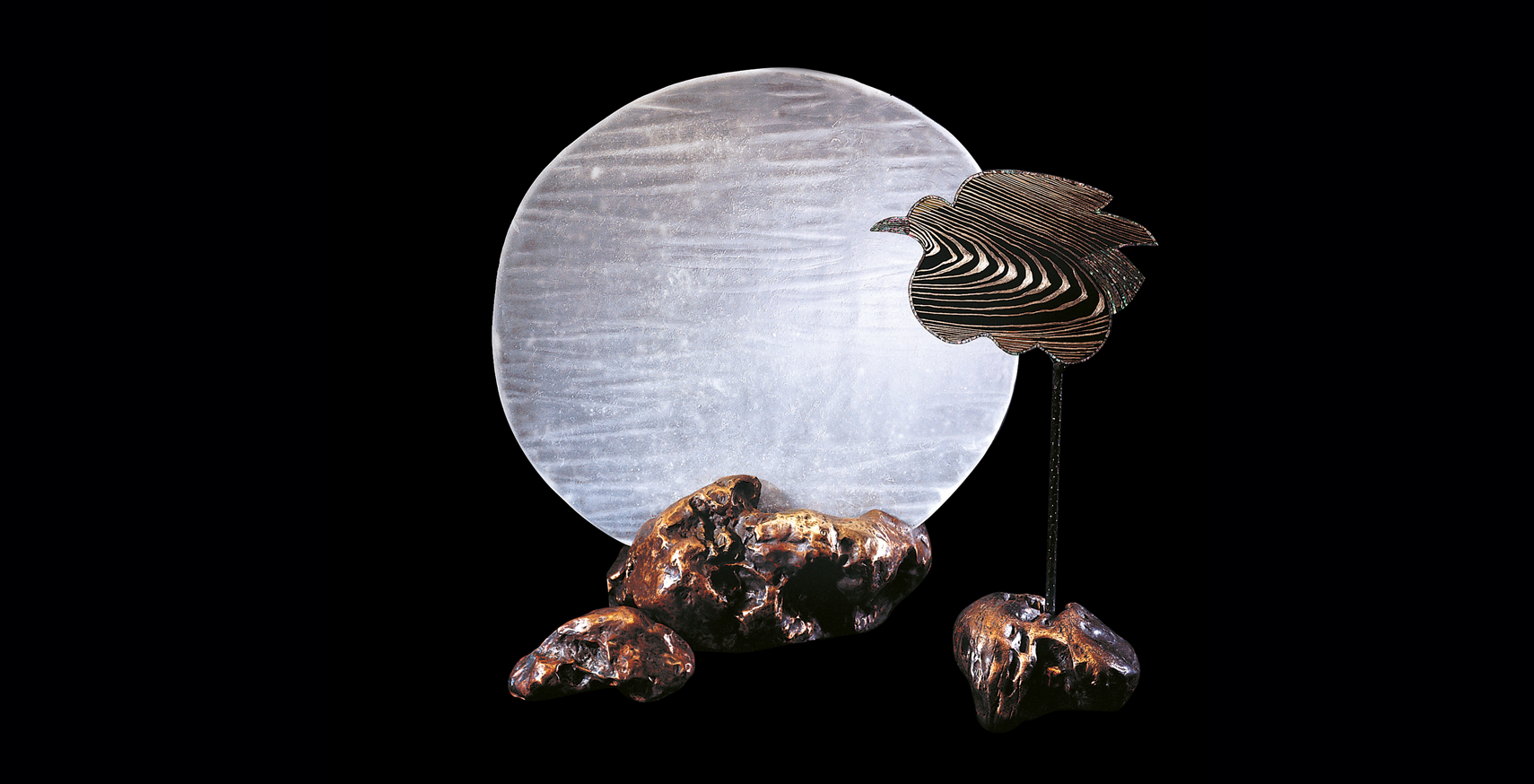 Hong Jung Sil, Hues of the Sky (Glass Worked by Kim kira)
Hong Jung Sil, Hues of the Sky (Glass Worked by Kim kira)
To create ipsa, a master craftsperson (dubbed ‘ipsajang’) creates grooves in a metal surface, which are then filled in with silver or gold thread to create beautiful designs. Creating those grooves is no easy task, however, requiring hours of repetitive chisel work. Even a small piece may require over 10,000 strikes of the chisel. You've also got to melt silver or gold, let it cool into thin strips and then cut it into thread. Finally, you've got to pound the thread into the grooves with a hammer.
None of this is especially quiet work. But the works are undeniably beautiful.
For instance, take the Bronze Incense Burner with Silver-inlaid Design of Tongdosa Temple, designated by the government Treasure 1354. Crafted in 1346, this mesmerizing piece of work is covered in inlay depictions of clouds, lotus flowers, dragons, phoenixes and Sanskrit writing. These sophisticated motifs of pounded silver elevate the viewer to a new spiritual plane, beyond the mundane to a world where phoenixes soar above the clouds.
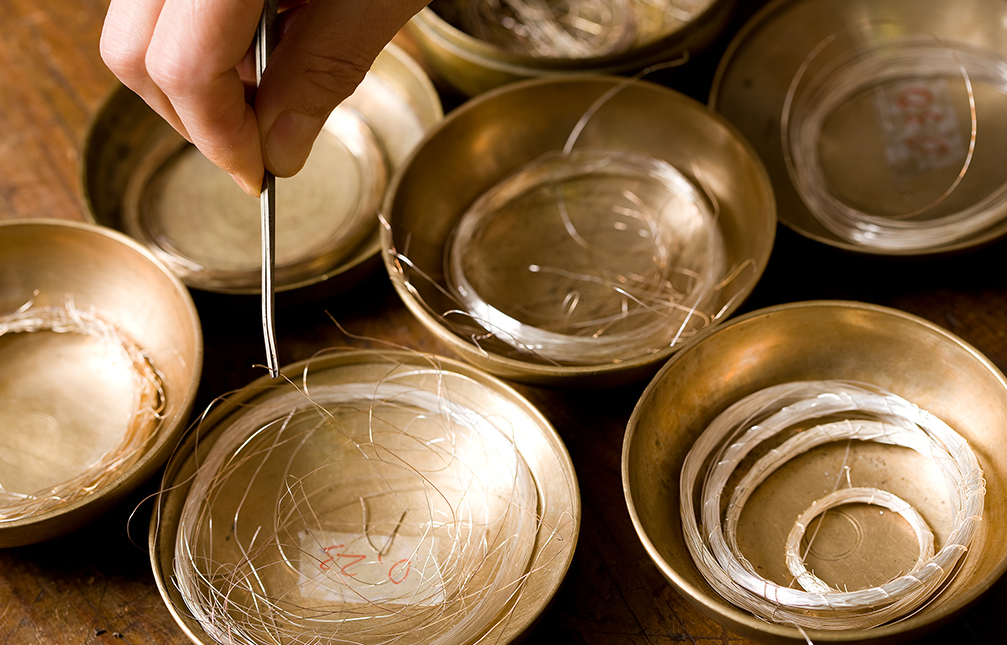
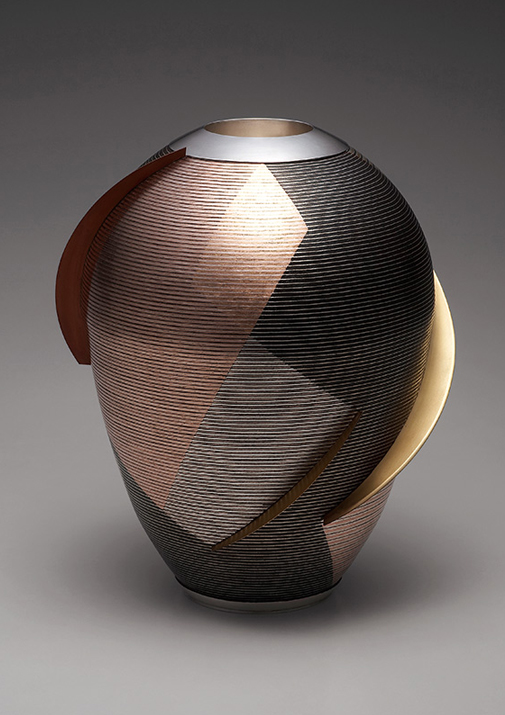 Hong Jung Sil, Deep Spring of Sub-Consciousness II
Hong Jung Sil, Deep Spring of Sub-Consciousness II
Nobody is quite sure when Koreans began inlaying metal surfaces with other metals. Artifacts unearthed from the Lelang Commandery of the first or second century B. C. E. suggest the technique has been around since at least that time, and items discovered at Silla tombs indicate such metalwork was well developed by that time.
Ipsa is now recognized by the Korean government as National Intangible Cultural Heritage 78. Broadly speaking, contemporary artisans employ two methods of inlaying. The oldest, which first developed during the Goryeo era (918-1392), involves engraving thin grooves into the metal surface using a chisel. The artisan then inserts silver or gold thread into the groove.
The second one, which developed during the Joseon era (1392-1910), involves making broader incisions into the metal surface using a chisel, then hammering silver or gold plates or string into them.
Geometric patterns are a popular motif, as are floral and animal motifs such as apricots, orchids, chrysanthemums, bamboo, cranes, deers, bats, tigers and pines.
Ipsa requires not only patience and dexterity, but also exquisite aesthetic sense. "To create a beautiful inlay work, you have to have that artistic sense to envision how your design will turn up on the surface of the chosen sculpture — a cube, a sphere or any other shape," said Hong Jung-sil, one of Korea's top ipsa artisans, in a 2019 interview with the Korea Herald. "Manual skills can be mastered if you put in enough time and effort."
Ipsa requires not only
patience, but also exquisite aesthetic
sense and the ability to envision
how your design appears on
the metallic surface.
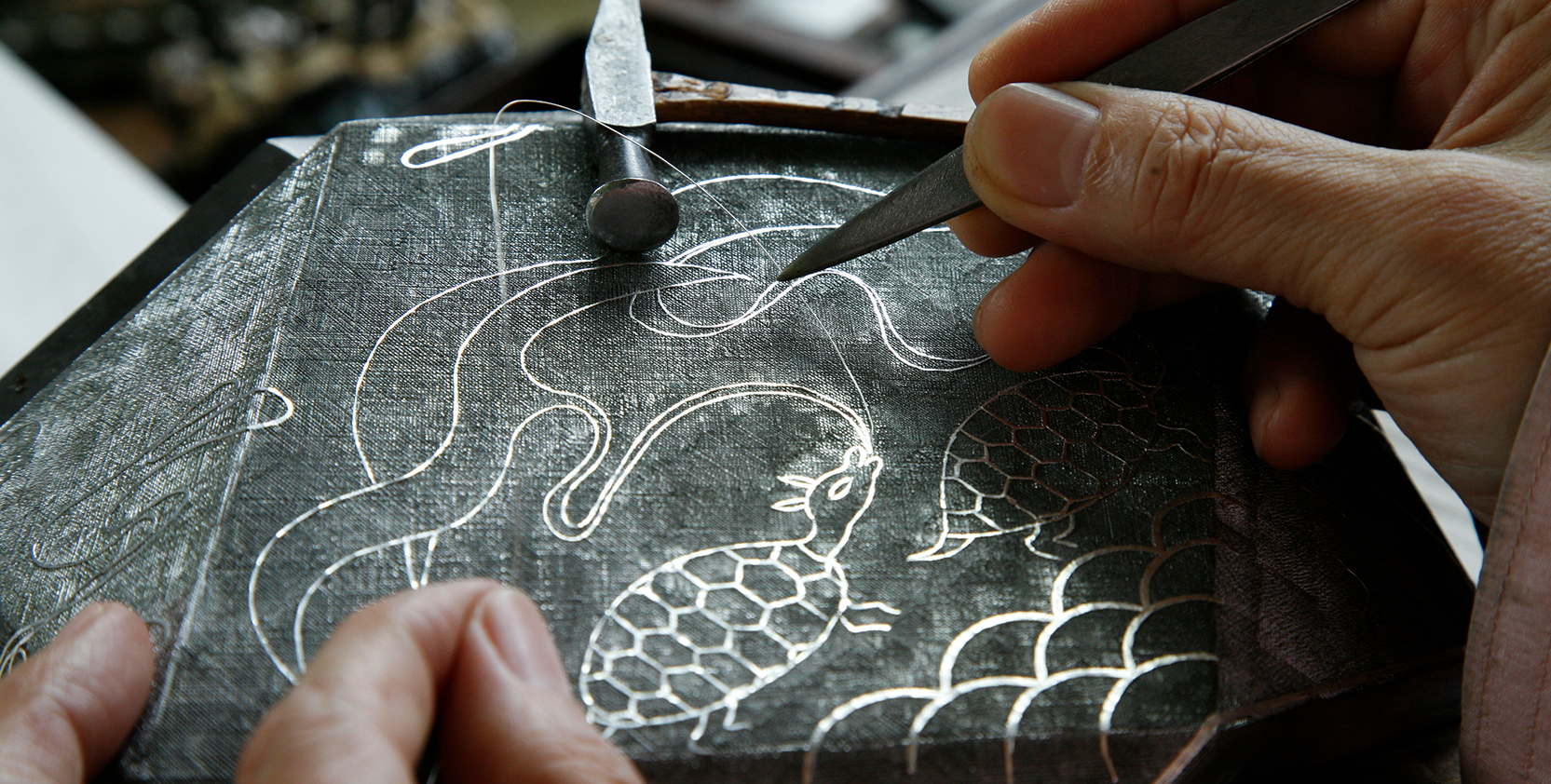
Ipsa occupies a prominent place in traditional Korean crafts. Three national treasures are works of ipsa, most notably National Treasure 92, the “Bronze Kundika with Silver-inlaid Willow and Waterfowl Design.” One of the finest works of Goryeo metal craft, the bronze Buddhist ritual vessel is inlaid with silver designs of floral patterns, birds and idyllic waterside landscapes.
One example of Korean ipsa is a national treasure in Japan, an iron sword presented to the ruler of Yamato-era Japan by the king of Korea’s ancient Baekje kingdom. The seven-branched sword, preserved to this day at the Isonokami Shrine in Japan’s old capital of Nara, is inlaid with gold inscriptions that testify to the millennia of relations between Korea and Japan.
At first, only the powerful and wealthy could afford silver and gold-inlaid works of metalcraft, but toward the end of the Joseon era, works of ipsa found their way into the hands of a wider stratum of Korean society.
Now, South Korean artisans produce a wide range of ipsa products that harmonize traditional techniques with modern sensibilities.
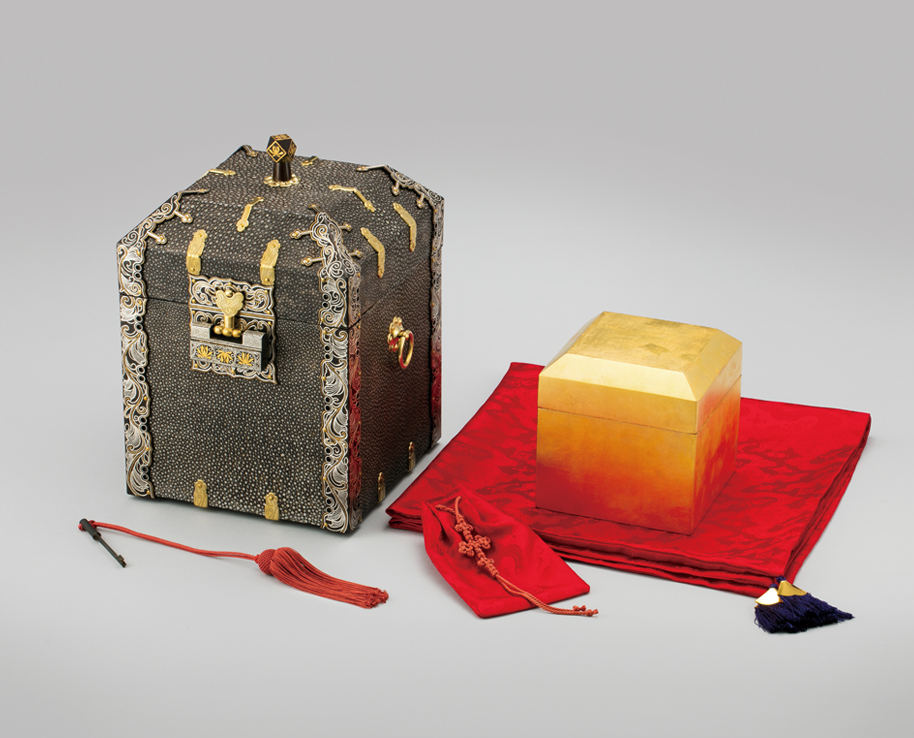

Government-recognized master Hong Jung-sil, has been striving to keep the craft alive since the 1970s. She learned the art from the last living master of the Joseon era. Her creative works have drawn attention from not only buyers and overseas museum directors, but even from major Korean corporations. Sulwhasoo, a makeup brand of Korean cosmetics giant Amore-Pacific, released in 2018 a series of inlaid compacts as a collaboration with Hong. The compacts feature beautiful inlaid designs of trees, waterfalls, animals and other traditional motifs. Not only are the compacts works of art, but they also demonstrate that traditional metal craft can continue to have a place in daily life.